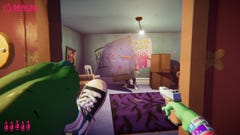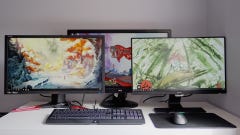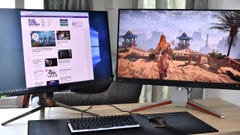AMD Radeon RX 6700 XT review
A 1440p powerhouse with a very unfortunate pricing problem
The AMD Radeon RX 6700 XT arrives at an awkward time for next-gen graphics card buyers. In the four months since AMD's first RDNA 2 Big Navi cards arrived on the scene, we've seen little to no improvement in the general availability of these new GPUs, and I wouldn't be surprised if the RX 6700 XT ended up suffering exactly the same fate when it launches tomorrow on March 18th, disappearing within an instant of going on sale and the prices of any remaining models skyrocketing as a result.
Still, even if we were in a position where stock shortages weren't an ongoing problem, the slower pace of AMD's release schedule means they're now playing constant catch-up to Nvidia's RTX 30 GPUs. Indeed, with its starting price of $479, the RX 6700 XT sits rather uneasily between Nvidia's $399 RTX 3060 Ti and $499 RTX 3070. AMD's more expensive Radeon RX 6800 was already competing with the latter, outperforming the RTX 3070 at 1440p but falling behind at 4K and overall ray tracing performance, which would sort of imply the RX 6700 XT is perhaps a more appropriate rival for the RTX 3060 Ti. And yet the combination of its higher price and there still being no sign of AMD's FidelityFX Super Resolution tech to help bolster its ray tracing chops against Nvidia's performance-boosting DLSS gubbins ends up putting the RX 6700 XT in a very strange place. It's still a powerful card for 60fps 1440p gaming on max settings; it's just not particularly great value for money.
In its defence, the RX 6700 XT does come with a couple of features that are considerably more attractive than either of its Nvidia rivals. For example, its 12GB of GDDR6 VRAM gives it ample headroom to make full use of those high-end, texture packs we're starting to see in games such as Watch Dogs Legion, and it should stand it in pretty good stead in the years to come, too - much more so than the 8GB of VRAM you'll get on the RTX 3060 Ti and RTX 3070.
There's also the promise of AMD's Smart Access Memory feature, which should help give a small bump to the card's performance when it's paired with one of AMD's Ryzen 3000 or 5000 CPUs. It's a similar sort of thing to the Resizable BAR tech that Nvidia are currently rolling out across their RTX 30 family at the moment, as both of them let your CPU have full access to your GPU's memory banks. However, whereas Resizable BAR only works on a very select number of games right now, Smart Access Memory is designed to work with everything. I'm still in the process of testing this particular feature on the RX 6700 XT and I'll be writing up a more thorough analysis of it in the coming weeks, but I'm intrigued by its potential, and the hope is that we'll start to see even bigger gains over time as developers start getting to grips with it.
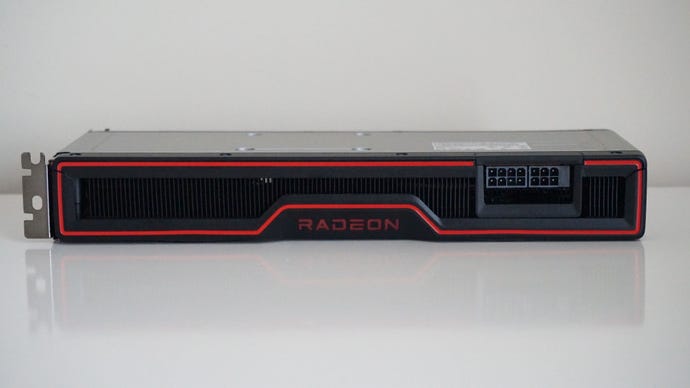
AMD Radeon RX 6700 XT benchmarks
In the here and now, though, the RX 6700 XT struggles to make much of an impact against its Nvidia competition, both at 1920x1080 and its intended gaming resolution of 2560x1440. As I said earlier, this is still a highly capable card that can quite handily run nearly all of today's big blockbuster games at 60fps on max settings at 1440p, and well into the 90s, if not 100s down at 1080p. It can also produce playable frame rates at 4K, too, if you don't mind playing on Low to Medium settings. However, as soon as you throw ray tracing into the equation, it all starts to go south pretty quickly.
In Shadow Of The Tomb Raider, for example, the RX 6700 XT produced a very smooth average of 66fps on Highest at 1440p with its top SMAA x4 anti-aliasing setting switched on, and an even silkier 103fps average when I knocked it down to its regular SMAA setting. That's all fine and dandy, but when I switched on its ultra ray traced shadows, I had to stick with that regular SMAA setting in order to get a playable average of 55fps on Highest at 1440p, which is quite a bit slower than the RTX 3070's result of 72fps with the same settings. The RTX 3070 also has the benefit of DLSS in this game, which pushed its average frame rate even higher to 81fps. The RTX 3060 Ti was also able to hit an average of 70fps with DLSS enabled, too. For the RX 6700 XT to hit those kinds of frame rates with ray tracing switched on, I had to drop the resolution down to 1080p, where I got an average of 77fps on Highest with SMAA enabled.
The RX 6700 XT struggled in Metro Exodus, too. Again, its average of 70fps on Ultra settings at 1440p is perfectly adequate (even if it is down 10fps from the RTX 3070's benchmark results), but that frame rate almost halved to 44fps as soon as I turned on its High ray tracing settings (which is the only other option apart from Ultra ray tracing). The RTX 3070, meanwhile, can do 57fps with Ultra ray tracing settings on Ultra at 1440p, and 65fps with High ray tracing - and that's without the aid of DLSS, too. Throw that in and you're looking at 68fps and 73fps speeds respectively. The closest the RX 6700 XT could get to a playable ray tracing frame rate at 1440p, however, was an average of 55fps on Normal settings with RT High.
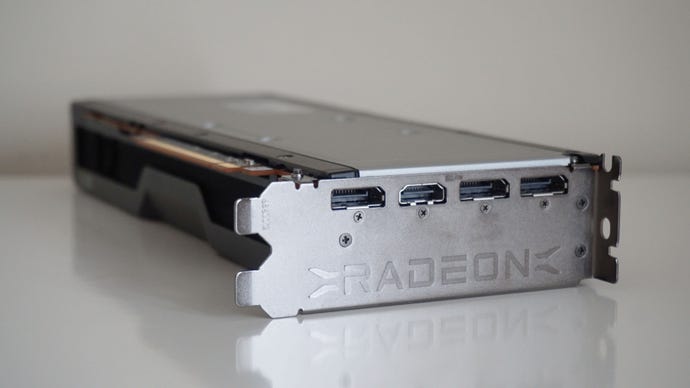
As for ray tracing in Watch Dogs Legion, you can pretty much forget it at 1440p, as this really does chop the RX 6700 XT's frame rates in half when there's no DLSS equivalent to help give them a lift. As before, an average of 61fps on Ultra settings at 1440p is highly respectable, but it's still not a patch on the memory-limited RTX 3070, which managed an average of 71fps on the same preset, despite it requiring more memory than the RTX 3070's 8GB of VRAM. Try adding Medium ray tracing to the mix, though, and the RX 6700 XT stuttered along at an average of 31fps - a far cry indeed from the RTX 3070's 64fps average with Ultra ray tracing and DLSS switched on. Indeed, the best ray tracing result I was able to get for the RX 6700 XT while still maintaining a decent quality level was at 1080p again, this time on High with Medium RT settings, which averaged 55fps - which is hardly what you want from an almost $500 graphics card.
Of course, the hope is that the RX 6700 XT's ray tracing performance will, at some point, be just as good as what you get over on Nvidia cards once AMD release their DLSS-competitor, FidelityFX Super Resolution. However, there's still no sign that it's anywhere near ready yet, and AMD have given no further hints on when that might be, either. Despite supposedly being a piece of open source software much like their Freesync and other FidelityFX tools, it would appear that developer support for Super Resolution may be part of the issue, as AMD had this to say when I asked for an update:
"We continue to expand our collaborations with game developers on the development of an upscaling feature for AMD Radeon graphics cards that can be easily implemented across a broad selection of titles. We will provide more details on our AMD FidelityFX Super Resolution feature at the appropriate time."
It's not a statement that fills me with hope, I must admit, but even if Super Resolution suddenly became available tomorrow, I'm still not sure that the RX 6700 XT's raw performance in games more generally is enough to turn the tide for it either - at least not compared to the RTX 3060 Ti and RTX 3070. In Total War: Three Kingdoms, for instance, the RX 6700 XT managed a smooth average of 57fps on Ultra settings at 1440p, and a very smooth 82fps average on High. In isolation, they're a great set of results, but when the cheaper RTX 3060 Ti can manage pretty much identical speeds for a lot less, they start to look rather less impressive.
The same goes for Monster Hunter: World, too. The RX 6700 XT's average of 68fps on Highest at 1440p was lovely and smooth while I was running through the dense undergrowth of its Ancient Forest environment, but so was the RTX 3060 Ti's average of 70fps on the same settings. The RX 6700 XT pulled ahead in Final Fantasy XV, admittedly, averaging 76fps on Highest at 1440p compared to the RTX 3060 Ti's 69fps average, but in practice I wasn't really able to notice the difference moment-to-moment. My eyes aren't sensitive enough to distinguish another 7fps at this kind of speed, and it's only when you start pushing into the 90fps realms with the RTX 3070 that I saw a tangible difference in my overall gaming experience.

Heck, even the game that saw the RX 6700 XT take the biggest lead over its Nvidia rivals, Assassin's Creed Valhalla, fell into a similar sort of situation, and I'm not sure its average of 73fps on Ultra High and 83fps on High at 1440p was that materially different from the RTX 3070's averages of 63fps and 72fps. Both cards occasionally dipped down to the low 40s on Ultra in its built-in benchmark, and both hit similar lows in the mid 50s on High, so it's not even like one was less juddery than the other during particularly busy moments. Some might be able to distinguish between another 10fps here, but to me it felt very similar. Besides, when taken together with the rest of the RX 6700 XT's rather lacklustre set of results, one game just isn't enough to swing it back in AMD's favour.
Ultimately, those after a 1440p graphics card are just better off going with Nvidia this time round, as the RX 6700 XT doesn't really justify its higher price in ordinary games, and it certainly doesn't when you start throwing ray tracing into the mix. Instead, the RTX 3060 Ti offers similar speeds for a lot less (assuming prices eventually return to normal, that is), while the RTX 3070 gets you a lot more for just a little bit extra.
As I said, I'll be doing some further tests to see if AMD's Smart Access Memory tech makes any kind of difference versus my current Intel system, and I'll also be testing XFX's Speedster Merc 319 Black edition of the RX 6700 XT to see whether it offers any tangible improvements on AMD's reference model. In the meantime, though, I'd suggest holding fire on the RX 6700 XT, at least until we've got a better idea of when their FidelityFX Super Resolution tech might swoop in to save the day.




